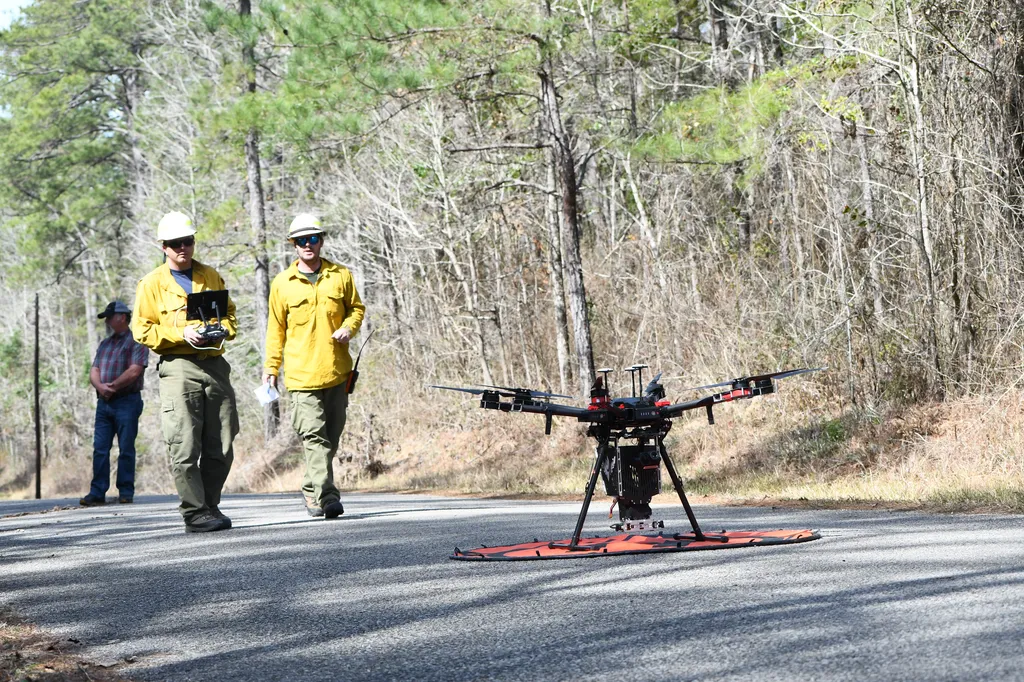In the heart of Florida, a groundbreaking study is reshaping how we approach wildlife surveys, with implications that stretch far beyond the wetlands of Tampa. Joni Downs, a researcher at the University of South Florida, has developed a novel geospatial approach that promises to enhance the accuracy of wildlife detectability, a critical factor for ecological monitoring and conservation efforts. Her work, published in *Ecological Informatics* (which translates to *Ecological Information Science*), is not just an academic exercise; it’s a practical tool that could revolutionize how industries, including energy, interact with and monitor wildlife in their operational areas.
Downs’ research focuses on point counts, a common method for measuring wildlife abundance. However, the accuracy of these counts can be skewed by biases influenced by observer location and environmental conditions. To tackle this, Downs integrated viewshed analysis—a method that determines visibility from a given point—with spatial optimization techniques. “We wanted to create a framework that explicitly accounts for visibility and observer placement,” Downs explains. “This can significantly improve data quality and optimize field effort.”
The study quantified visibility using both terrain-only and LiDAR (Light Detection and Ranging) enhanced viewshed analysis across 34 wetlands in Tampa. LiDAR, a remote sensing technology that uses light in the form of a pulsed laser to measure ranges, provided a more accurate representation of the landscape, reducing overestimation of visible areas by about half compared to surface-only analysis. “LiDAR substantially improved our visibility estimates,” Downs notes. “The amount of improvement depended on factors like wetland shape, open water, and tree canopy coverage.”
The results were striking. Optimal survey locations yielded a mean increase of about six times more visible area than the worst locations and about 1.5 times the average. A field validation at one of the larger wetlands confirmed the accuracy of the LiDAR-based visibility analysis, which was found to be 90% accurate.
So, what does this mean for the energy sector? Accurate wildlife surveys are crucial for environmental impact assessments, compliance with regulations, and informed decision-making. For instance, energy companies often need to conduct wildlife surveys to assess the impact of their operations on local ecosystems. By using Downs’ geospatial approach, they can ensure more accurate and reliable data, leading to better-informed decisions and potentially reducing the need for costly and time-consuming re-surveys.
Moreover, this research could pave the way for more efficient and effective ecological monitoring programs. “Our framework provides practical tools to enhance wildlife survey design,” Downs says. “This can lead to more accurate data collection and better resource allocation, ultimately benefiting both industry and conservation efforts.”
The implications of Downs’ work extend beyond the energy sector. Any industry or organization involved in ecological monitoring could benefit from this approach. From forestry to agriculture, accurate wildlife surveys are essential for sustainable practices and regulatory compliance.
As we look to the future, Downs’ research offers a glimpse into how technology and data science can transform traditional methods. By leveraging LiDAR and spatial optimization, we can achieve more precise and efficient ecological monitoring. This not only enhances our understanding of wildlife populations but also ensures that industries operate in a manner that is both environmentally responsible and economically viable.
In the words of Joni Downs, “This is just the beginning. The potential applications of this approach are vast, and we’re excited to see how it will shape the future of ecological monitoring.” With such promising developments on the horizon, the future of wildlife surveys looks brighter—and more accurate—than ever before.

